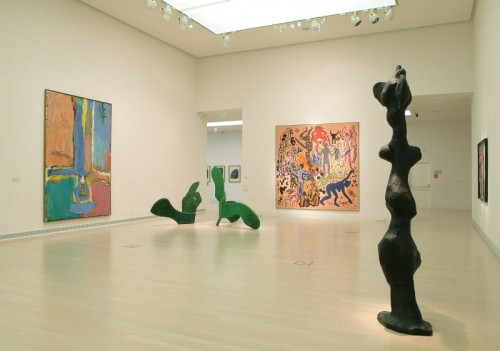Roy Lichtenstein is an emblematic figure of American pop art, who became known for his enlarged comic strip scenes in the early 1960s. The inspiration for Vicki (1964) was a romantic comic strip by Jay Scott Pike, which Lichtensteinadapted for his own work. By enlarging the original frame, the scene was stripped of its original context, reworked and repainted, shifting the focus from story to still image, from ephemeral product manufactured for mass culture to individual work of art, and Lichtenstein’s own art. “I am nominally copying, but I am really restating the copied thing in other terms. In doing that, the original acquires a totally different texture. It isn’t thick or thin brushstrokes, it’s dots and flat colours and unyielding lines.” In the case of Vicki, we can also see the typical dots resulting from the enlargement of the dotted pattern (“Ben-Day dots”), as well as the strong black outlines and pure colours (magenta and yellow) on a white background, which, together with the cyan, are so characteristic of Lichtenstein’s work. The picture shows a pretty blonde woman being addressed by a man in a suit with his back turned: ‘Vicki! I-I thought I heard your voice!’ The text is from another comic, as is the gesture of the mysterious man grabbing the door post, so Lichtenstein is deliberately editing the source images. The appealing female face, the tension between the man and the woman, the “close up” all work effectively despite the fact that we don’t know the story. Lichtenstein condenses, highlights, enlarges and re-colours: he creates his iconic works by consciously using and re-thinking the tools of pop culture and advertising.
Krisztina Szipőcs



